M
I
C
R
O
S
T
O
R
Y
O
F
A
R
T
........................................................

NOW COMPLETED:

........................................................
MICROSTORY OF ART
ONLINE JOURNAL FOR ART, CONNOISSEURSHIP
AND CULTURAL JOURNALISM
........................................................
INDEX | PINBOARD | MICROSTORIES |
FEATURES | SPECIAL EDITIONS |
HISTORY AND THEORY OF ATTRIBUTION |
ETHNOGRAPHY OF CONNOISSEURSHIP |
SEARCH

........................................................



 >MICROSTORIES
>MICROSTORIES
- Richard Serra
- Martin Scorsese
- Claude Simon
- Sunshine
- Werner Herzog
- The Creation
- Marcel Duchamp
- Nino Rota
- Wölfflin and Woolf
- Hansjörg Schneider
- Kraftort Arkadien
- Visual Biography
- Schlaraffenleben
- Die Geisteswissenschaften
- The Voyeur
- Buzzword Sustainability
- Paul Verlaine
- Tao Yuanming
- New Beginning
- Seneca
- Still Lifes
- Charles Baudelaire
- Frédéric Chopin
- The Art History of Sustainability
- Wang Wei
- Solarpunk
- Historians of Light
- Lepanto
- Renaturalization
- Plates
- Snow in Provence
- Learning to See
- Picasso Dictionaries
- Peach Blossom Spring
- Picasso Tourism
- Tipping Points
- Sviatoslav Richter
- Weather Reports
- Treasure Hunt
- Another Snowscape in Picasso
- Picasso in 2023
- Dragon Veins
- The Gloomy Day
- The Art of the Pentimento
- Reforestation
- The Status of Painting
- Emergency Supply
- Punctuality
- Watching Traffic
- Zhong Kui
- How Painting Survived the 1990s
- Confirmation Bias
- Sustainability and Luxury
- Garage Bands
- Picasso and Artificial Intelligence
- Eyes of Tomorrow
- Picasso in 2023 2
- Gluing Oneself to Something
- Suburbia
- Bamboo
- Sustainability and Carpe Diem 1
- Interviews with Bruegel
- Sustainability and Carpe Diem 2
- Coffee & Sugar
- Bamboo 2
- Picasso in 2023 3
- Sustainability and Carpe Diem 3
- Cherry Orchard
- Old Magazines
- Chance
- Nick Drake
- Harlequin
- The Smartphone & the Art Book
- Atlas Syndrome
- The Kitchen
- Atlas Syndrome 2
- Consideration
- Tori Amos
- School
- Orchard Auctioning Day
- The Hundred Years’ War
- Sócrates
- Chameleon
- Nefertiti Bust
- Picasso as a Computer
- Sunflowers
- Philemon & Baucis
- Ode to the Radio
- Childhood
- Wimmelbild
- Restitution
- Nick Drake 2
- Wishful Thinking
- Sundays
- The Independent Scholar
- September
- The Fisherman by Pirosmani
- Microadventure
- Sociology
- Salvator Mundi
- Chillon
- Appassionata
- Amber
- Homer
- Berlin
- Planet Walk
- Improvisation
- Seeing Picasso
- These Nice Kids
- Robber
- The One
- The Sea Turtle
- Zoo
- Through the Hush
- Wunderkammer
- I Do Not Seek, I Find
- Shopping Mall
- Food Hamper
- The Secretary
- This Gate
- Nor Rainy Day
- House on a Hill
- Beautiful Island
- Second-hand Bookstore
- Flat
- Slap in the Face
- Serra, Wenkenpark
- Apologies
- The Bells
- Nordmann Fir
- Picasso Wanting To Be Poor
- Picasso, Pirosmani
- A Brief History of Sculpture
- 24 Sunsets
- Rusty Phoenix
- Glove
- Wintry Stanza
- A Song
- Like A Beatle
- Catching An Orange
- Solar Bees
- Permaculture

 >FEATURES
>FEATURES
- Van Gogh On Connoisseurship
- Two Museum’s Men
- Ende Pintrix and the City in Flames
- Titian, Leonardo and the Blue Hour
- The Man with the Golden Helmet: a documentation
- Un Jury d’admission à l’expertise
- Learning to See in Hitler’s Munich
- Leonardo da Vinci and Switzerland
- The Blue Hour Continued
- The Blue Hour in Louis Malle
- Kafka in the Blue Hour
- Blue Matisse
- Blue Hours of Hamburg and LA
- A Brief History of the Cranberry
- The Other Liberale in the House
- The Blue Hour in Raphael
- Who Did Invent the Blue Hour?
- Monet on Sustainability
- Velázquez and Sustainability
- The Blue Hour in Guillaume Apollinaire
- Van Gogh on Sustainability
- The Blue Hour in Marcel Proust
- Picasso and Sustainability
- The Contemporary Blue Hour
- The Blue Hour in 1492
- The Blue Hour in Hopper and Rothko
- Hopper and Sustainability
- The Blue Hour in Ecotopia
- The Hour Blue in Joan Mitchell
- Explaining the Twilight
- The Twilight of Thaw
- The Blue Hour in Pierre Bonnard
- Explaining the Twilight 2
- Picasso on Stalin
- Rubens on Sustainability
- The Salvator Mundi in Bruegel and Rubens
- The Blue Hour in Leonardo da Vinci and Poussin
- The Blue Hour in Rimbaud
- Faking the Dawn
- Frost and Thaw in Ilya Ehrenburg
- Picasso, Stalin, Beria
- Picasso, Solzhenitsyn and the Gulag
- Shostakovich on Picasso
- Hélène Parmelin in 1956
- Historians of Picasso Blue
- Picasso Travelling to Moscow 1
- The Blue Hour in Caravaggio
- Picasso Travelling to Moscow 2
- Picasso, the Knife Game and the Unsettling in Art
- Some Notes on Leonardo da Vinci and Slavery
- Picasso Moving to the Swiss Goldcoast
- The Blue Hour in Camus
- The Blue Hour in Symbolism and Surrealism
- Caspar David Friedrich in His Element
- Exhibiting the Northern Light
- Caspar David Friedrich in His Element 2
- Robert Schumann and the History of the Nocturne
- The Blue Hour in Robert Schumann
- Caspar David Friedrich and Sustainability
- The Twilight of Thaw 2
- Multicultural Twilight
- The Blue Hour in Anton Chekhov
- The Blue Hour in Medieval Art
- Twilight Photography
- The Blue Hour in Bob Dylan
- Iconography of Optimism

 >SPECIAL EDITIONS
>SPECIAL EDITIONS
- Visions of Cosmopolis
- Mona Lisa Landscapes
- Turner and Ruskin at Rheinfelden
- Painters On TV & On TV
- Spazzacamini in Art
- A Last Glance at Le Jardin de Daubigny
- The Experimental Cicerone
- A Dictionary of Imaginary Art Historical Works
- Iconography of Blogging
- Begegnung auf dem Münsterplatz
- Cecom
- Das Projekt Visual Apprenticeship
- Those Who See More
- A Fox on Seeing with the Heart
- Sammlung Werner Weisbach
- Daubigny Revisited
- Some Salvator Mundi Microstories
- Some Salvator Mundi Afterthougths
- Some Salvator Mundi Variations
- Some Salvator Mundi Revisions
- A Salvator Mundi Questionnaire
- A Salvator Mundi Puzzle
- Unknown Melzi
- Francis I and the Crown of Charlemagne
- From Amboise to Fontainebleau
- Drones Above Chambord
- Looking Back At Conques
- Flaubert At Fontainebleau
- Images of Imperial Ideology
- The Chronicles of Santa Maria delle Grazie
- Seeing Right Through Someone
- Melzi the Secretary
- Eying Glass
- A Foil to the Mona Lisa
- A Renaissance of the Cartoon
- Sketching a Family Tree
- Venetian Variations
- A Brief History of Digital Restoring
- A Consortium of Painters
- Leonardeschi and Landscape
- A Christ in Profile
- Learning to See in Spanish Milan
- A History of Gestures
- Leonardo and Josquin
- A Renaissance of the Hybrid
- Suida and Heydenreich
- The Watershed
- Three Veils
- From Beginning to End
- Connoisseurship of AI
- Twilight and Enlightenment
- The Blue Hour in Chinese Painting
- Dusk and Dawn at La Californie
- Iconography of Sustainability
- The Blue Hour in Goethe and Stendhal
- The Sky in Verlaine
- The Blue Hour in Paul Klee
- Iconography of Sustainability 2
- The Blue Hour in Charles Baudelaire
- From Bruegel to Solarpunk
- Some Salvator Mundi Documentaries
- Some More Salvator Mundi Monkey Business
- The Windsor Sleeve
- Brigitte Bardot’s Encounter with Picasso
- Art Historians and Historians
- A Salvator Mundi Chronicle
- The Salvator Mundi and the French Revolution
- The Fontainebleau Group
- The Encounter of Harry Truman with Pablo Picasso
- The Fontainebleau Group Continued
- The Windsor Sleeve Continued
- The Salvator Mundi in Early Netherlandish Painting 1
- Some Salvator Mundi Resources
- A New Salvator Mundi Questionnaire
- The Woman in Picasso
- The Yarborough Group
- Melzi, Figino and the Mona Lisa
- The Yarborough Group Continued
- A Salvator Mundi Global History
- The Salvator Mundi in Medieval Art
- The Salvator Mundi in Medieval Art 2
- The Salvator Mundi in Early Netherlandish Painting 2


 >HISTORY AND THEORY OF ATTRIBUTION
>HISTORY AND THEORY OF ATTRIBUTION
- The Mysterious »Donna Laura Minghetti-Leonardo«
- Assorted Demons of Connoisseurship
- Panofsky Meets Morelli
- Discovering the Eye of Sherlock Holmes
- Handling the Left-handed Hatchings Argument
- Visual History of Connoisseurship
- Alexander Perrig
- Connoisseurship in 2666
- What Postmodernity Has Done to Connoisseurship
- Dividing Four Fab Hands
- A Leonardesque Ambassador
- Test Cases in Connoisseurship
- A Raphael Expertise
- How to Tell Titian from Giorgione
- Louise Richter
- The Unique Property in the History of Connoisseurship
- An Expertise by Berenson
- The Book of Expertises
- An Album of Expertises
- An Expertise by Friedländer
- A Salvator Mundi Provenance
- How to Tell Leonardo from Luini
- An Expertise by Crowe and Cavalcaselle
- An Expertise by Bayersdorfer
- An Expertise by Hermann Voss
- An Expertise by Hofstede de Groot
- Leonardeschi Gold Rush
- An Unknown »Vermeer«
- An Expertise by Roberto Longhi
- An Expertise by Federico Zeri
- A Salvator Mundi Geography
- A Salvator Mundi Atlas
- The Bias of Superficiality
- 32 Ways of Looking at a Puzzle
- James Cahill versus Zhang Daqian
- Five Fallacies in Attribution
- On Why Art History Cannot Be Outsourced to Art Dealers
- On Why Artificial Intelligence Has No Place in Connoisseurship
- Salvator Mundi Scholarship in 2016
- Leonardo da Vinci at the Courts
- The Story of the Lost Axe
- The Last Bruegel
- A Titian Questionnaire
- On Where and Why the Salvator Mundi Authentication Did Fail
- The Problem of Deattribution

 >ETHNOGRAPHY OF CONNOISSEURSHIP
>ETHNOGRAPHY OF CONNOISSEURSHIP
MICROSTORY OF ART
ONLINE JOURNAL FOR ART, CONNOISSEURSHIP
AND CULTURAL JOURNALISM
........................................................

***
ARCHIVE AND FURTHER PROJECTS

1) PRINT


***
2) E-PRODUCTIONS


........................................................

........................................................

........................................................
FORTHCOMING:


***
3) VARIA

........................................................

........................................................

........................................................

........................................................

........................................................
***
THE GIOVANNI MORELLI MONOGRAPH

- The Giovanni Morelli Monograph
........................................................
MICROSTORY OF ART
ONLINE JOURNAL FOR ART, CONNOISSEURSHIP AND CULTURAL JOURNALISM
HOME
MICROSTORY OF ART ONLINE JOURNAL FOR ART, CONNOISSEURSHIP AND CULTURAL JOURNALISM  Suida and Heydenreich 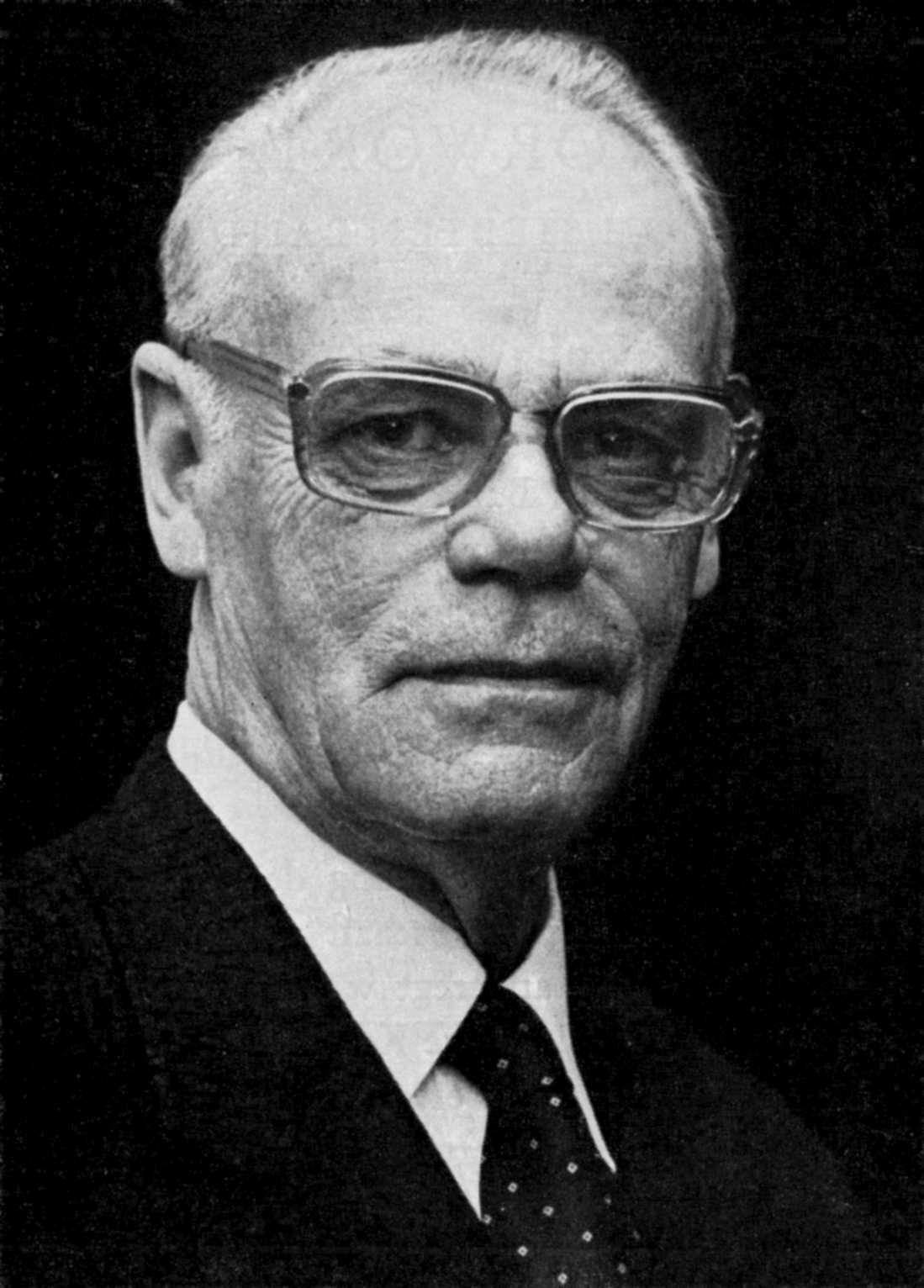 |
See also the episodes 1 to 24 of our New Salvator Mundi History:
Francis I and the Crown of Charlemagne
The Chronicles of Santa Maria delle Grazie
A Brief History of Digital Restoring
Learning to See in Spanish Milan
And:
Suida and Heydenreich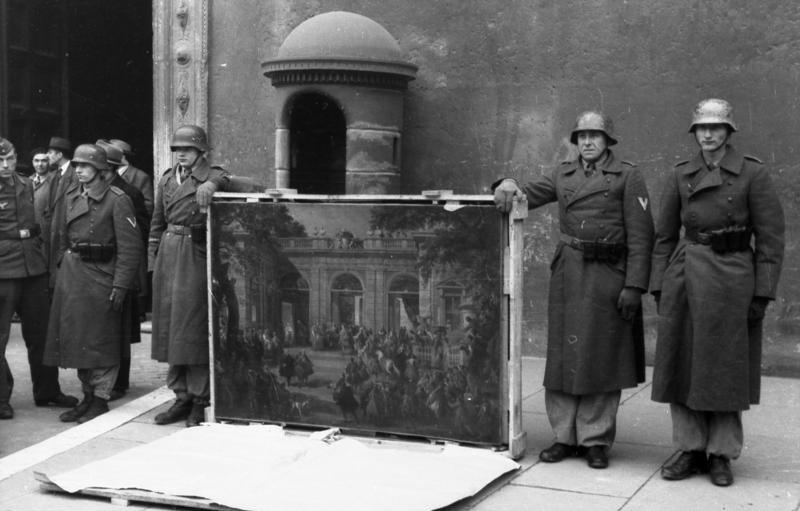
(5.10.-6.10.2021) The names of Wilhelm Suida and of Ludwig Heinrich Heydenreich often come up in Salvator Mundi scholarship,
and we should know these two men better. These two scholars do not only represent various generations of art historians –
they also do, on some level, represent ›art history in exile‹ vs. ›art history in Germany and Italy during the Nazi era‹.
Wilhelm Suida (1877-1959), one of the few art historians who had specialized in Leonardeschi scholarship, in 1938, had
chosen the way of exile. Which is why, today, he is remembered as an ›Austrian-American‹ art historian. Ludwig Heinrich
Heydenreich (1903-1978), on the other hand, the leading Leonardo specialist in Nazi-Germany, had chosen, according to the
few sources available, a sort of inner exile. The Berlin professor, who had managed to publish a Leonardo monograph in
1943, and who is said to have had ›no illusions‹ as to National Socialism, was active, during the War, in the service of the
protection of art historical monuments in Italy, but also in the service of Nazi cultural propaganda based in Italy (and
both did go along). After the Second World War and after having lost his property in Germany due to the War, Heydenreich
moved into important positions again. In 1964 he did publish the modern reference article for Salvator Mundi studies
in the Raccolta Vinciana. But this article, as important as it might be, is also rife with problems, widely unseen
problems, but problems that have to be named. Along with a number of other problems that, in its sum, prevent that we can
see the history of Salvator Mundi studies more clearly. And this means also: the history of art history before, while
and and after Germany was ruled by the Nationalsocialists, more clearly. And this is what we are aiming at with this 25.
episode of our New Salvator Mundi History.
(pictures in title: univie.ac.at; babelio.com; bg: Boruah)


One) Art History in the Nazi Era – Art History in Exile
In 1931 both men, Wilhelm Suida and Ludwig Heinrich Heydenreich, had contributed to the same journal. Both – Suida was
in his fifties, Heydenreich still a young man – published in the Jahrbuch der Preussischen Kunstsammlungen, and
the monumental catalogue for the 1939 Leonardo exhibition in Milan (instigated by Mussolini), still offered a
contribution by Suida on the Leonardeschi. But at this point, Suida already had chosen the way of exile, and he was to
become an advisor for Samuel H. Kress.
The career path of Ludwig Heinrich Heydenreich – his friends called him ›Heinz‹, which is not only merely anecdotal, but
important to know as to the spotting of sources –, has only been investigated more thoroughly in recent years (see
Arend/Schaeff 2010). And one gets to know that Heydenreich was protected by Wilhelm Pinder, most ardent
Nazi art historian of the era, while other Berlin academics did not want him at the Berlin university. Heydenreich, who
had studied in Hamburg, came from the orbit of Panofsky and Warburg, and while never being an actual follower of these
two scholars, one did this hold against him – but not Pinder, the most ardent Nazi, who saw Heydenreich as an ideal
candidate for Berlin.
These actual, rather ambiguous circumstances have never been highlighted in detail by Leonardo scholarship or by mainstream
history of art history. One did stress that the study of Italian art – architecture rather than painting –, did mean for
Heydenreich an ›encounter with a higher form of humanity‹ (and certainly: one did stress that Heydenreich came from the
orbit of Panofsky and Warburg). What one did not ask was how these things can go together: how can a scholar be dedicated
to a study of the highest forms of humanity, while expressing loyalty to a regime that sets in motion war, obvious
crimes, and more or less obviously, the worst crimes of all times? What about the possibility that such studies work as
an embellishment of, or even do legitimize such regime?
Raising such questions does not mean to judge Heydenreich. What I would be interested in, is to know how Heydenreich
himself saw this relation of studies and context of studies, and how he judged himself – morally. Before the War, during
the War, and after the War. Scholars like Heydenreich had not helped to set crimes in motion, certainly not, but scholars
like Heydenreich had helped to have the regime appear ›cultured‹ and hence legitimate. And one does wonder, if the study
of the highest form of humanity, at the time, served as an embellishment of the image of the regime, as the Leonardo
exhibition of 1939 – Heydenreich was a member of the scientific comittee – did serve as an embellishment of the regime of
Mussolini. And Heydenreich, who did move into important positions after the War, becoming director of the Zentralinstitut
für Kunstgeschichte in the former Nazi headquarter in Munich, did never contribute anything to answer such questions,
nor did the history of art history, or Leonardo scholarship.
One does wonder, in brief, if not something fundamentally important was lacking in Heydenreich’s profile as a scholar.
Certainly he may have had his strengths as a positivist, perhaps also as an empirical observer. But wasn’t something
equally important lacking? Wasn’t it a positivism without an actual ›inner compass‹? Wasn’t an ethical, political or
sociological dimension completely lacking? If it was possible that Heydenreich, who might still have been a noble
character, could be instrumentalized and allowed to be instrumentalized. Because there was nothing in his work to
prevent him being the ideal candidate for Wilhelm Pinder, or to prevent being instrumentalized by the Nazi cultural
propaganda based in Italy (for the latter see Caraffa/Goldhahn 2012)?

Two) Does Leonardo-Scholarship Have a History?
Leonardo-scholarship could have a very interesting history, but it shows – with few exceptions – little interest in its
own history. Several obstacles do prevent it.
One might say that the humanities or Geisteswissenschaften in general are shaped by the need/necessity/will to
self-promotion today (and the general audience probably has little awareness to what degree the humanities are,
respectively, the output of the humanities is shaped by the will to self-promotion), but Leonardo studies are
particularly shaped by monomanic self-promotion. Those who have attained the status or the position that allows them to
publish large-scale (and usually very expensive) Leonardo monographs that are meant to cover ›the whole Leonardo‹, usually
have lost interest in the rest of the field, or in what has been done in the past. A history of Leonardo scholarship
would be, literally, the exact opposite of such monomanic monographs which are not the least monuments to the Professor
Enthroned, as one might say, being literally an expression of such iconography, because a history of Leonardo scholarship
would relativize the aspirations of single scholars, and, of course, such monuments. It would show that what was common
knowledge at one time was largely rubbish, or that the high quality output of scholarship had been marginalized (or had
been the result of collective work and not of the monomanic work of single luminaries). Usually the innovative element of
monumental Leonardo monographs is relatively modest, especially if compared with the bombastic monumental appearance
of such monographs (people buy them for the sake of images anyway) (picture above left: Arnaud 25; right: unknown).
A history of scholarship usually also does raise the question of career paths. How was it possible that certain
individuals did ›conquer‹ certain positions? Who was of help, and who was not helped at all? And it goes without saying,
that as for art history at the time of National Socialism, raising such questions is particularly delicate. It goes
without saying, one might add here, that projects to study art history at the time of National Socialism only were
carried out relatively recently. It did take long that the discipline did raise questions such as the ones raised above
concerning Heydenreich. And again: Leonardo scholarship certainly did not raise them at all.


Three) Re-Reading Suida
The interesting with Suida’s Leonardo und sein Kreis-monograph of 1929 – a fruit, as the author says, of twenty years
of studies – is that it can be seen as a monograph on the Leonardeschi as well as a monograph on Leonardo. The book has
appeared in an Italian translation in 2001, and, as I dare to assume, not because another Leonardo monograph was needed,
but because exactly this was needed – a Leonardeschi monograph that, largely, is dedicated to Leonardo being influencial
in his followers.
But as the author says in his preface: you do not know Leonardo if you don’t know the sphere of his influence, the
radiance of his personality, as being reflected and expressed by other hands realizing his ideas. Suida, who had a
positive view of Morellian connoisseurship (and who probably also saw its decline with Berenson, who had left behind its
– at least envisioned – rational scholarly discipline, trading that for the authoritative gesture of the alleged genius of
opinion-giving, acclaimed by followers not being aware that such practice has nothing in common with scholarly practice,
with scientific connoisseurship anymore, even if Berenson once had began with it and built on it), Suida distinguished
the connoisseurial practice aiming at discerning autograph works by various authors, from a practice aiming at the
detection of Leonardo in his pupils and followers. The book, probably influencial as a collection of heterogeneous
materials, especially visual materials, did not instigate a new trend. Those who could see that one cannot know Leonardo,
if one does not know the Leonardeschi have always been a minority. And the lack for Leonardeschi-scholarship was felt in
the 19th century, as it was felt in the 20th, and in the 21st. But mainstream Leonardo-scholarship did not feel that
lack. One faithfully did accept Berenson’s attribution of the Detroit Salvator Mundi to Giampietrino for example
(Suida had it attributed to Marco d’Oggiono), and while arrogantly looking down from academic chairs at the connoisseurs
and while smiling at them with the arrogance of mandarins who have better things to do, one did not even realize today
that the faithfully reproduced attribution is wrong. It was been falsified by dendrochronology. Berenson was wrong (as
was Suida, as one has to add), but the professors of art history, clueless as to their own cluelessness, have neither
acknowledged the falsification (the picture is attributed to Giamipietrino in the latest editions of Zöllner’s
catalogues), nor have they ever replaced connoisseurship with something better, thus building art history (and the better
things they have to do) on something better and more solid (which would be scientific connoisseurship, and not
Berensonian one).


Four) Re-Reading Heydenreich
Heydenreich’s crucial and influential Salvator Mundi essay in the Raccolta Vinciana is made of three elements: 1)
heterogeneous materials are amassed in a positivistic way; 2) observations are being made in the materials, especially
visual materials; and 3) subjective claims are being made in a more or less authoritative way (which means here: without
further discussion of alternatives). What the reader does not get to know, is that Heydenreich had been responsible for
two expertises on the Zurich Salvator Mundi version; something that the reader may sense, if he or she knows it,
because Heydenreich also arranges his materials so as to show that the Zurich version is, with the Detroit one, the most
relevant one. But the reader does not get to know that Heydenreich, although it seems clear, that in some sense he is
decided to act as an advocate of the picture, does regard it as a Leonardo/workshop hybrid, an attribution, as I have
shown, that is most likely wrong, since the picture is closely related as to fold details to the Detroit one, which
cannot have been painted earlier than the end of the 16th century. It is likely, although it cannot be proven at the
moment, that both picture come from one and the same late 16th/early 17th century workshop.
One may admire Heydenreich for his positivism or not, but the materials he amasses are full of gaps. And seen from the
momentary state of Salvator Mundi research, very essential gaps. Two may be named:
Obviously Heydenreich was not familiar with the work of Francesco Malaguzzi Valeri, because otherwise he would have known
that at least in one chronicle of Santa Maria delle Grazie, Leonardo da Vinci had been credited with having painted a
Salvatore for Santa Maria delle Grazie (the link to the chronicle, but not to Malaguzzi Valeri, was brought back by
Luke Syson, in his Salvator Mundi catalogue entry for the catalogue for the National Gallery Leonardo show of 2011).
Another important gap is the Master of the Pala Sforzesca to whom Roberto Longhi, in 1946, had attributed a Salvator
Mundi that is now in the Fitzwilliam Museum of Cambridge (an attribution confirmed by Federico Zeri, and accepted by
Pietro C. Marani and Maria Teresa Fiorio). This picture (below) is important because it might be much closer to Leonardo (and
probably earlier than his Salvator Mundi design) than the Melozzo da Forlì version Heydenreich brought into
discussion, a picture that is, again, faithfully reproduced by Zöllner, without informing his readers that a whole
cluster of Melozzo da Forliì Christs does exist, and without being aware, obviously, of the existence of the Master
of the Pala Sforcesca version.
But apart from these gaps the most problematic elements are probably Heydenreich’s interpretations which I am referring
to as subjective claims: the essay begins with one that has gained some prominence: the author rightly points to the
Wenzel Hollar Salvator Mundi etching, which, according to Hollar, represents something Leonardo had painted, and
Heydenreich is careful – more careful than some of his readers – to indicate that this attribution of the painting after
which the etching was made, was Hollar’s attribution. But he goes on to say that a composition by Leonardo, executed
in paint, must have existed, because there are so many representations of that subject that come from Leonardo’s circle.
And this is exactly where the hunt for the lost original begins. More precisely: actually it had already begun, in
silence. The possibility that Leonardo only had provided a cartoon, and never did realize a painting, or the possibility
that Leonardo had executed the painting for Santa Maria delle Grazie and that it got destroyed on location, or that he
had sent one to the wedding of Maximilian I, after which it got lost, all this is nor considered nor debated. Because the
decision, silently, had already been taken: there had been an original, it is still there, and – it is the Zurich one.
(We know from Heydenreich’s papers in Munich that he was irritated when the Ganay version came up and gained some
prominence, with Joanne Snow-Smith, and with Carlo Pedretti particularly, as one of the experts, supporting it in some,
more or less committed sense).
The most problematic interpretation, however, does concern one element of the Salvator Mundi composition. It is the orb.
And the interpretation of Heydenreich is problematic, because he seems not able to see that the orb, the globe, if Christ
holds it in his hand, is a symbol of rule, that it is about political theology here, and that the tradition of the
Salvator Mundi is not only rooted in the Vera Icon tradition (this is also true, but incomplete), but also in the
tradition of depicting Roman emperors with an orb, with depicting Charlemagne with an orb, and with depicting French
kings wanting to be seen in the tradition of Charlemagne and having imperial aspirations, with an orb or globe.
This side of the Salvator Mundi iconography is most clearly seen by Martin Kemp, who not only, as Zöllner (who also
faithfully repeats Heydenreich as to the Vera Icon tradition) suggests in his catalogue, associated the orb with optical
studies.
One may add that Heydenreich’s view that the Salvator Mundi is about likeness, about the Vera Icon tradition, can most
easily be challenged, because if, for Leonardo, it was about that or most importantly about that – would Leonardo have
allowed his followers to produce Salvator Mundi pictures in series, of which every individual picture looked
differently?, including the monstrous versions by Salaì that are not that easily to be associated with any Vera Icon
tradition. Apart from the question if a Blessing Christ, being produced in a Dominican context is about something
very different anyway. But neither political elements of the iconography nor the question why Christ’s gaze is a
piercing, inquisitory one seems to be of any interest. Or Heydenreich was simply not able to see it.
Finally, it is perhaps worth mentioning that the essay is written and published in German language in the Raccolta
Vinciana, dedicated to an Italian collegue, and that, at the end, Suida is being referred to a couple of times, in
terms of referring to several images being reproduced in Suida, but not in terms of raising the question if there are
other ways, very different ways, of working on the Leonardeschi and on Leonardo.


Five) Conclusions
It would we worthwhile to follow more in detail some threads of research indicated in all of the above. Heydenreich’s
papers in Munich deserve more attention. Perhaps Suida papers do still exist in the United States. Leonardo-scholarship,
Leonardeschi-scholarship, as well as the history of art history, including the history of Leonardo-scholarship (in case
it would be wanted) could benefit from any in-depth archival studies.
A biography of Heydenreich would be most welcome, not because I would think that someone should be judged (or judged
differently than others have judged him). It is about understanding the most problematic period of human history better,
also as to a sphere that is, or seems to be commited to a study of cultural goods that, at first sight, have nothing to
do with the context of study. But the study of art history at the time of National Socialism shows, that, whatever one
may think at first, there are relations between what happens outside the academe, inside the academe, and on the level of
writing a monograph on Leonardo in the early 1940s. Perhaps writing this book was a sort of cocoon for Heydenreich and
indeed his inner exile, perhaps it is a good book, but it could also be that the ambition of encountering a higher form
of humantiy was shallow and a mere illusion, or it was not the right work at the right time, or that the idea of studying
humanity without these studies having any effect on, or relation with what happened in the context of these studies, had
to be challenged, at least after the War. Leonardo-scholarship might do more to raise such questions – and to answer them.
Selected Literature:
Wilhelm Suida, Leonardo und sein Kreis, Munich 1929 [an Italian translation, edited by Maria Teresa Fiorio, was
published in 2001]
Ludwig H. Heydenreich, Leonardo’s Salvator Mundi, in: Raccolta Vinciana 20 (1964), p. 83-109
Sabine Arend / Sandra Schaeff, »Eine der wichtigsten und vordringlichsten Aufgaben der Hochschule ist es, für einen
geeigneten Hochschullehrernachwuchs Sorge zu tragen«. Zur Nachwuchsförderung am Kunstgeschichtlichen Institut der
Berliner Friedrich-Wilhelms-Universität 1933-1945, in: Horst Bredekamp / Adam S. Labuda (eds.), In der Mitte
Berlins, Berlin 2010, p. 311-325
Costanza Caraffa / Almut Goldhahn, Zwischen »Kunstschutz« und Kulturpropaganda. Ludwig Heinrich Heydenreich und das
Kunsthistorische Institut in Florenz 1943-1945, in: Christian Fuhrmeister et al. (eds.), Kunsthistoriker im Krieg,
Cologne etc. 2012, p. 93-110


The Bottega of Leonardo da Vinci
The picture of the bottega of Leonardo da Vinci is not as blurred as one might imagine (for details see Seidlitz 1935, p. 530; Marani 1998). We will focus here on the early and middle years (up to 1512), and not on the late years, and one might begin with saying that with Boltraffio and Marco d’Oggiono we see two figures enter the orbit of Leonardo at the beginning of the 1490s that we believe to know rather well. We also see Salaì enter the orbit, at a very young age, and we have, in addition to that, a couple of names, names of figures that we do not seem to know very well, or not at all (a Giacomo, Giulio Tedesco, Galeazzo). Last but not least we have the Giampietrino problem: Giampietrino enters the scenery, but it is a matter of controversy (as far as this question is debated at all), when, since also Giampietrino is still very young.
It is noteworthy that Marco d’Oggiono, already at the end of the 1480s, seems to have had an own apprentice, and that Marco and Boltraffio did create the Pala Grifi together (a picture today in Berlin; picture above), even before Leonardo began to work at The Last Supper in 1495. Due to the work of Janice Shell and Grazioso Sironi we today do know more about Francesco Galli, also called Francesco Napoletano, who did die in Venice as early as 1501. One might imagine that Galli went to Venice with Leonardo in 1501, and if Galli, during the 1490s, for example might have cooperated with Marco, we would have found an interesting perspective: since, if only one single picture of the Marco group would be associated with Francesco Galli/Francesco Napoletano, we would have a picture with hand option 2, a picture that must have been created before Galli died in 1501. Which would mean that hand option 2 must have existed early, and my theory of the pentimento in version Cook as a mere switching from (preexisting) option 1 to (preexisting) option 2 would be positively proven as well as the theory of the pentimento supposedly showing the creative energy of genius (changing his mind) would be definitively falsified.
Brief: in the 1490s Leonardo mentions once that he had paid ›two masters‹ (probably Marco and Boltraffio) for two years; and once that he had six bocche to feed (probably again Marco, Boltraffio, plus Salaì and some of the unknowns).
Below a rather early Marco picture (according to Janice Shell), the Young Christ Blessing of the Galleria Borghese:
And here is a picture (not the only known picture) by Protasio Crivelli, formerly the apprentice of Marco d’Oggiono (picture by Sailko; the date appears to be 1498; location: Naples, Museo di Capodimonte):
In 1501 (3.4.) Pietro da Novellara informs Isabella d’Este that Leonardo seems to live ›from day to day‹ (see Marani 1998, p. 14). And he has seen Leonardo intervening from time to time in portraits done by two of his garzoni (»fano retrati«). But who are these, and which portraits are these (if this would have been about a Isabella d’Este portrait, Pietro would have noted; and after the Sforza had been expelled, portraits of court ladies and courtiers made no sense)? After having written on the picture of a young woman in the Columbia Museum of Art in one of the last episodes, I would now suggest the following:
Leonardo might have done a portrait of a Sforza court lady in the early Milanese years (and still in the Florentine portrait style), a portrait in terms of a drawing or a cartoon. He might have begun also a painting, but since the Sforza court got expelled and exiled after the French invasion, he might not have finished such portrait. He might instead have used it for the instruction of his garzoni: the Columbia picture might have been the one begun by Leonardo (as he seems to have begun portraits with the face, as later in the Mona Lisa), a picture that he might have had a pupil finish, with him retouching it again, adding some lustre. The picture in a private Russian collection might be a second version that he had a pupil repeat (after the first version and the drawing, respectively the cartoon). The Columbia picture shows much gusto for the grotesque, the second version less so, but still to some degree. Thus we would see pictures that have their origins in the first Milanese period (and even in the early Florentine period), but were actually done later (after 1500). And Leonardo might have had a hand in the Columbia picture whose head with the hair as well as the ornated hair net superbly being modelled into the dark is of exquisite quality (as also a single one pearl is, while other pearls are rather mediocre as also the bust and the modelling of the dress is). We see, as I have attempted to show in episode 13, two pictures that fit into the context of Leonardo’s thinking and doing rather than into the context of Boltraffio’s autonomous work: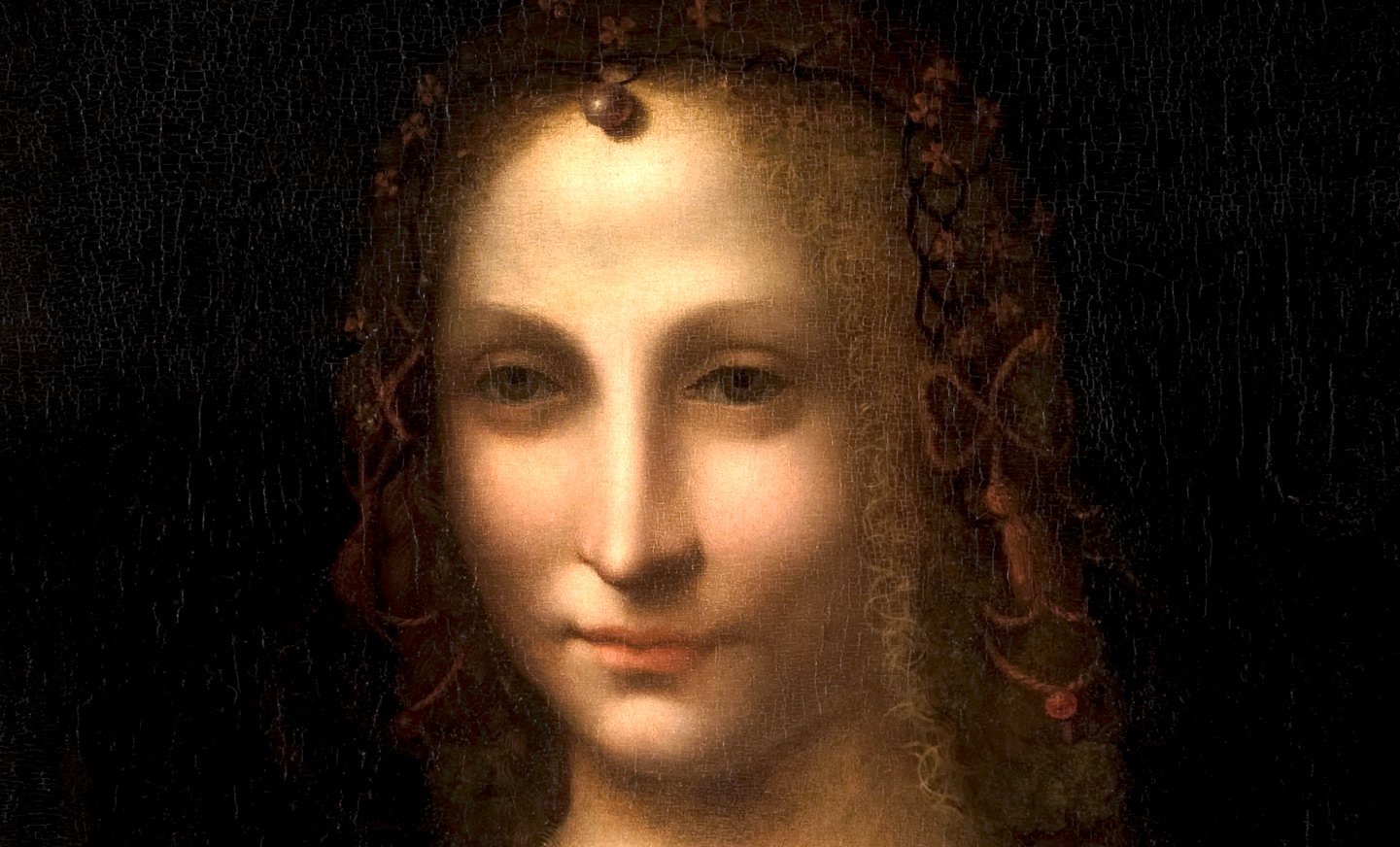
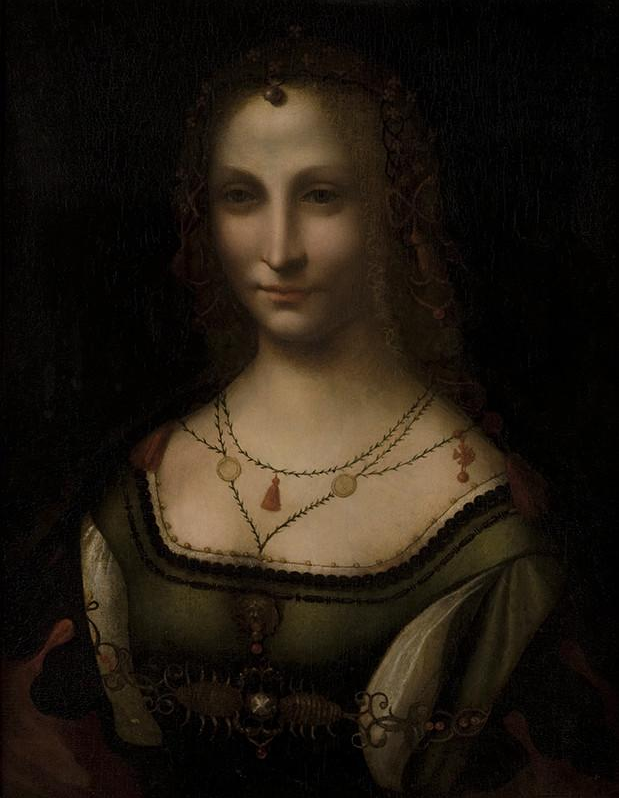
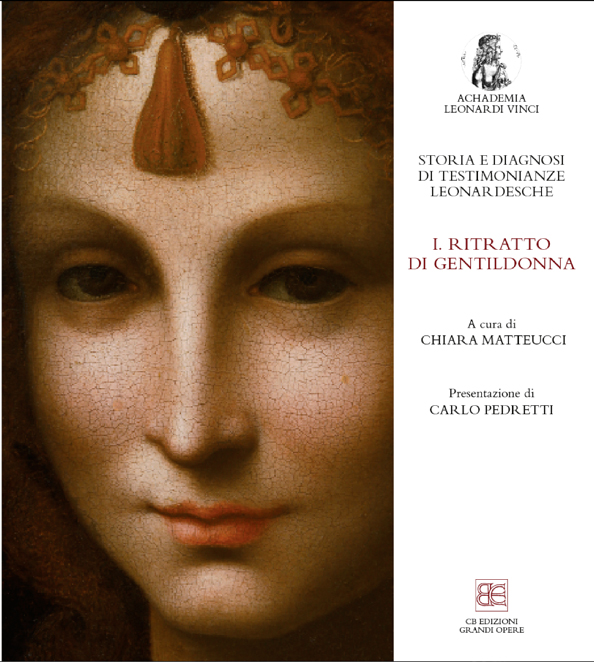
In 1504 a Jacopo Tedesco, in 1505 a Lorenzo (di Marcho) enter the orbit of Leonardo.
In around 1505 Fernando Yáñez enters the orbit of Leonardo, helping him with the Battle of Anghiari (as also does Riccio della Porta). Yáñez cannot be the author of the Prado Mona Lisa, if the Louvre Mona Lisa was finished only years later, since the dates (showing that Yáñez was active in Spain after 1506) do not allow to postulate it. In works of Yáñez done in Spain, however, we find echoes of Leonardo’s works (see the example below).
Around 1507 Francesco Melzi becomes a pupil of Leonardo (and also a sort of secretary).
In 1511 (or even earlier) Giampietrino is an autonomous master.
In 1511 Salaì seems to have created a (signed and dated) picture of Christ:
In around 1511 we see Marco, Boltraffio, Giampietrino and – Giovanni Agostino da Lodi in close contact, not only because we have a source indicating exactly that – we also have pictures indicating exactly that, and one of these pictures seems to be even dated (but the ›date‹ – ›XII‹ – is rather referring to the ›age of Christ‹):
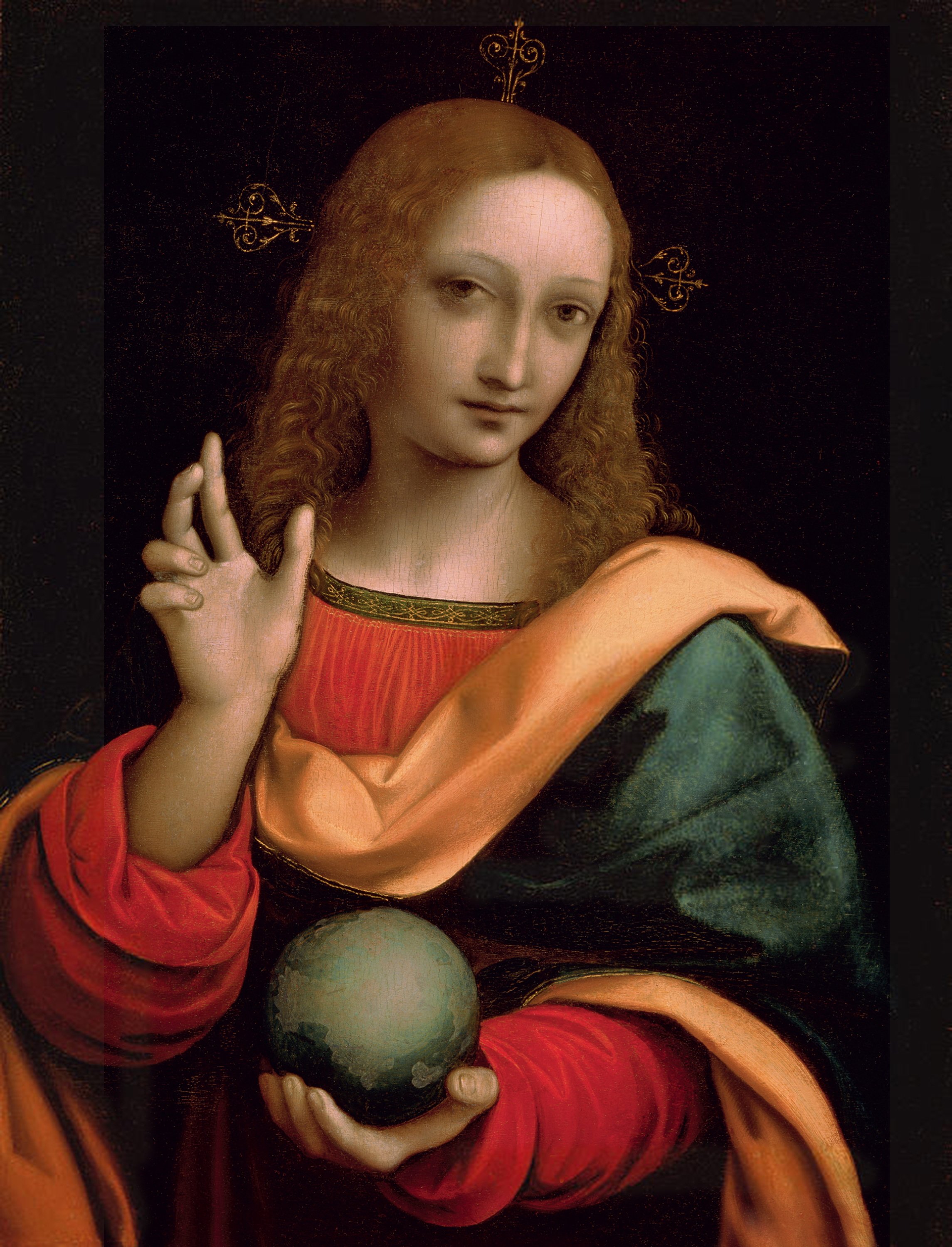
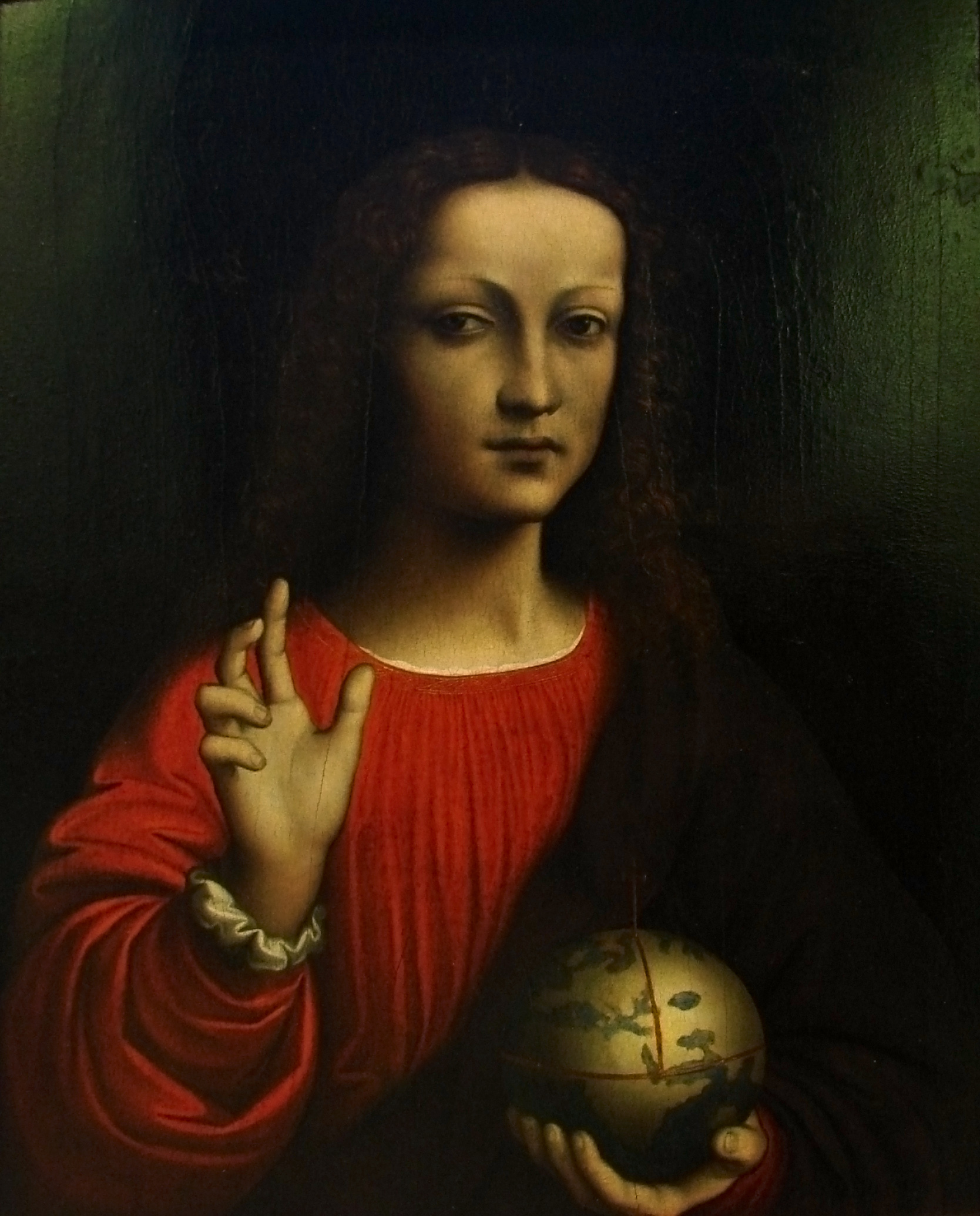
The Prado Mona Lisa (below) was probably begun at the time Leonardo also started reworking or completing the Louvre Mona Lisa, probably due to Giuliano de’ Medici wishing so, and hence perhaps in around 1511/12.
In around 1517 Marco d’Oggiono is cooperating with Giovanni Agostino da Lodi (see Shell, p. 173).
***
1516: Paolo Emilio, Italian-born humanist at the court of Francis I, publishes the first four books of his history of the Franks; death of Boltraffio.
1517: Leonardo da Vinci, with Boltraffio and Salaì, has come to France (picture of Clos Lucé: Manfred Heyde); 10.10.2017: Antonio de Beatis at Clos Lucé
1517ff: Age of the Reformation; apocalyptic moods; Marguerite of Navarre, sister of Francis I, will be sympathizing with the reform movement; her daughter Jeanne d’Albret, mother of future king Henry IV, is going to become a Calvinist leader.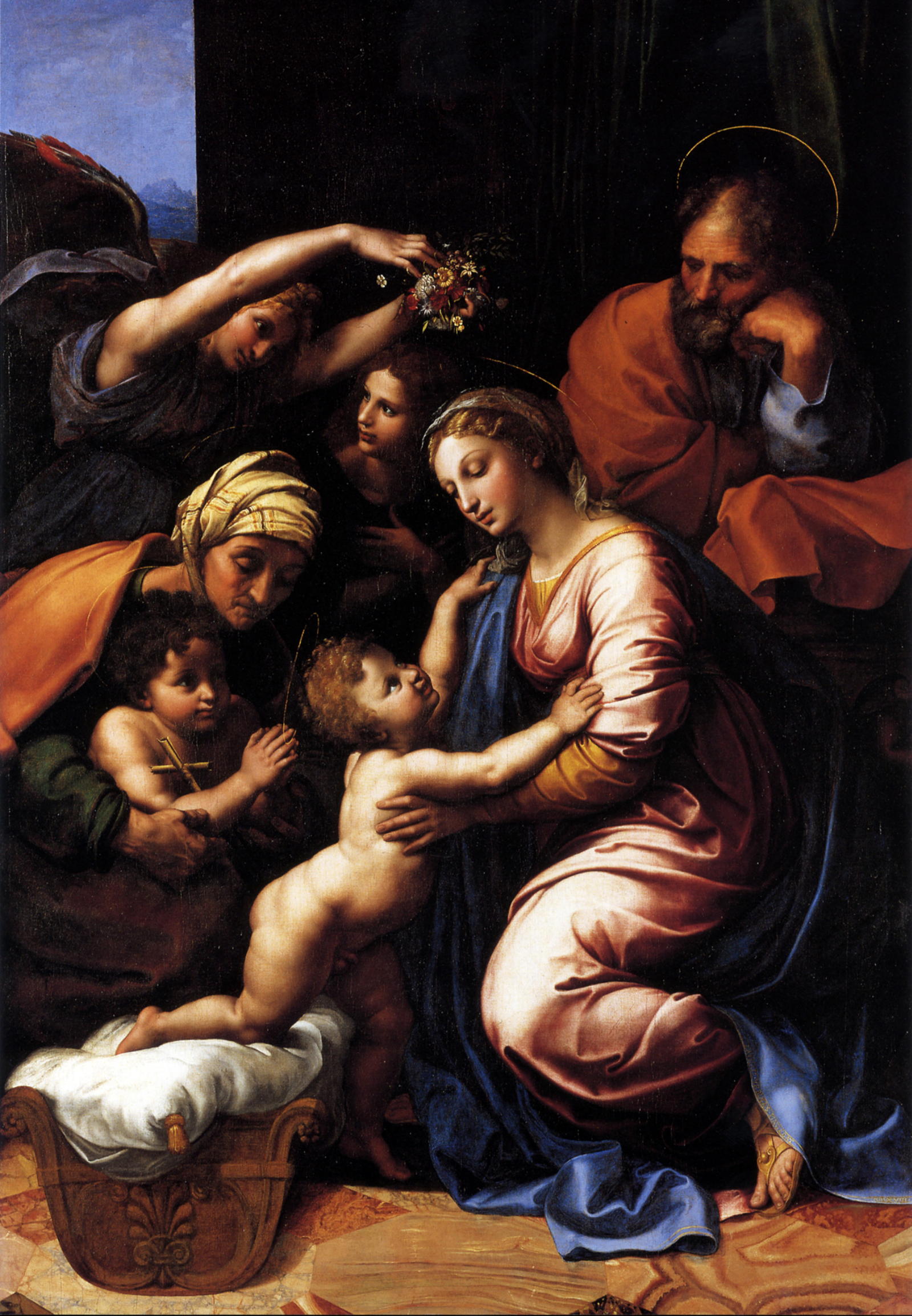
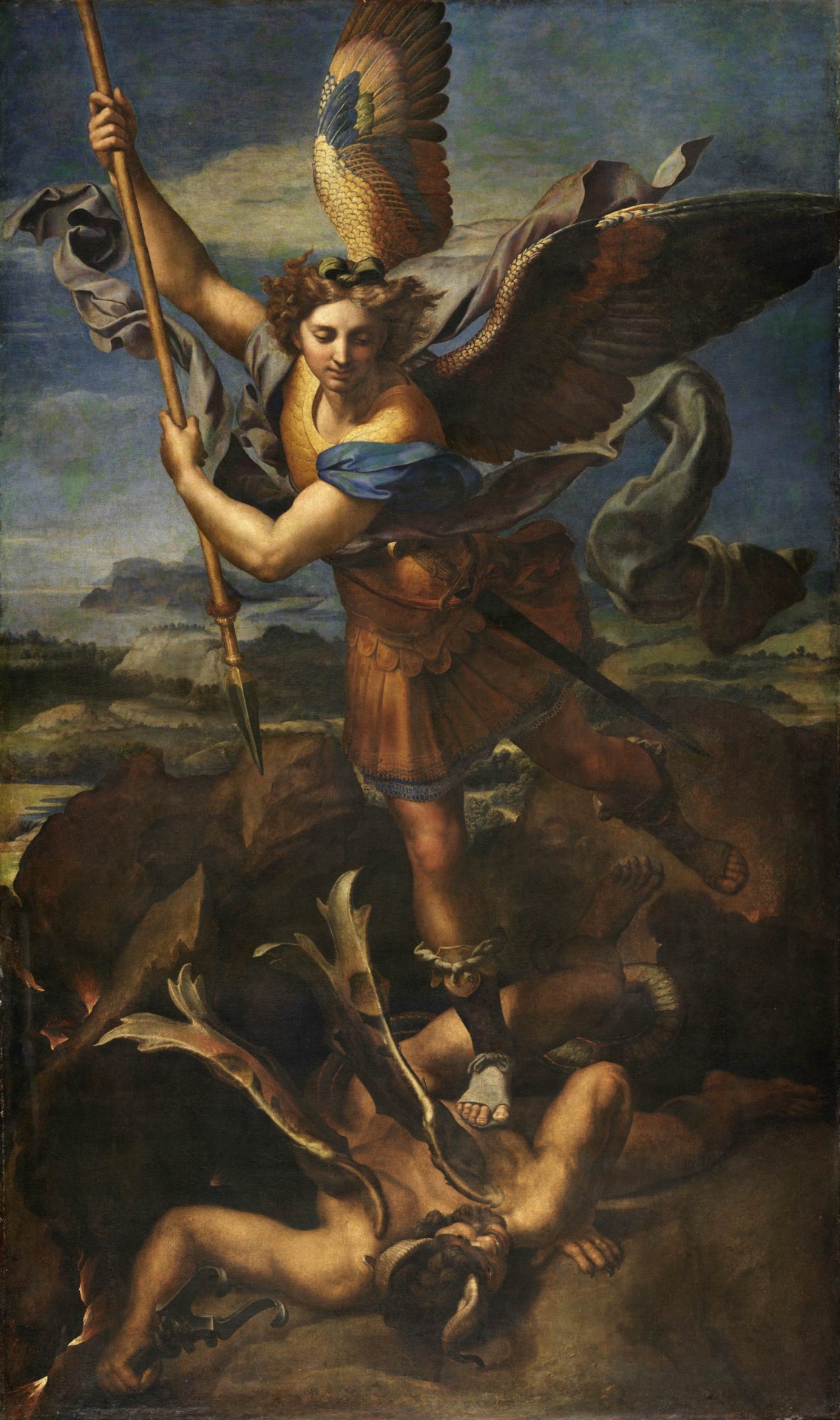
1518: the Raphael workshop produces/chooses paintings to be sent to France; 28.2.: the Dauphin is born; 13.6.: a Milanese document refers to Salaì and the French king Francis I, having been in touch as to a transaction involving very expensive paintings: one does assume that prior to this date Francis I had acquired originals by Leonardo da Vinci; 19.6.: to thank his royal hosts Leonardo organizes a festivity at Clos Lucé.
1519: death of emperor Maximilian I; Paolo Emilio publishes two further books of his history of the Franks; death of Leonardo da Vinci; Francis I is striving for the imperial crown, but in vain; Louise of Savoy comments upon the election of Charles, duke of Burgundy, who thus is becoming emperor Charles V (painting by Rubens).
1521: Francis I, who will be at war with Hapsburg 1526-29, 1536-38 and 1542-44, is virtually bancrupt.
1523: death of Cesare da Sesto.
1524: 19.1.: death of Salaì after a brawl with French soldiers at Milan.
1525: 23./24.2.: desaster of Francis I at Pavia. 21.4.1525: date of a post-mortem inventory of Salaì’s belongings.
1528: Marguerite of Navarre gives birth to Jeanne d’Albret (1528-1572) who, in 1553, will give birth to Henry, future French king Henry IV.
1530: Francis I marries a sister of emperor Charles V.
1531: death of Louise of Savoy; the plague at Fontainebleau.
1534: Affair of the Placards.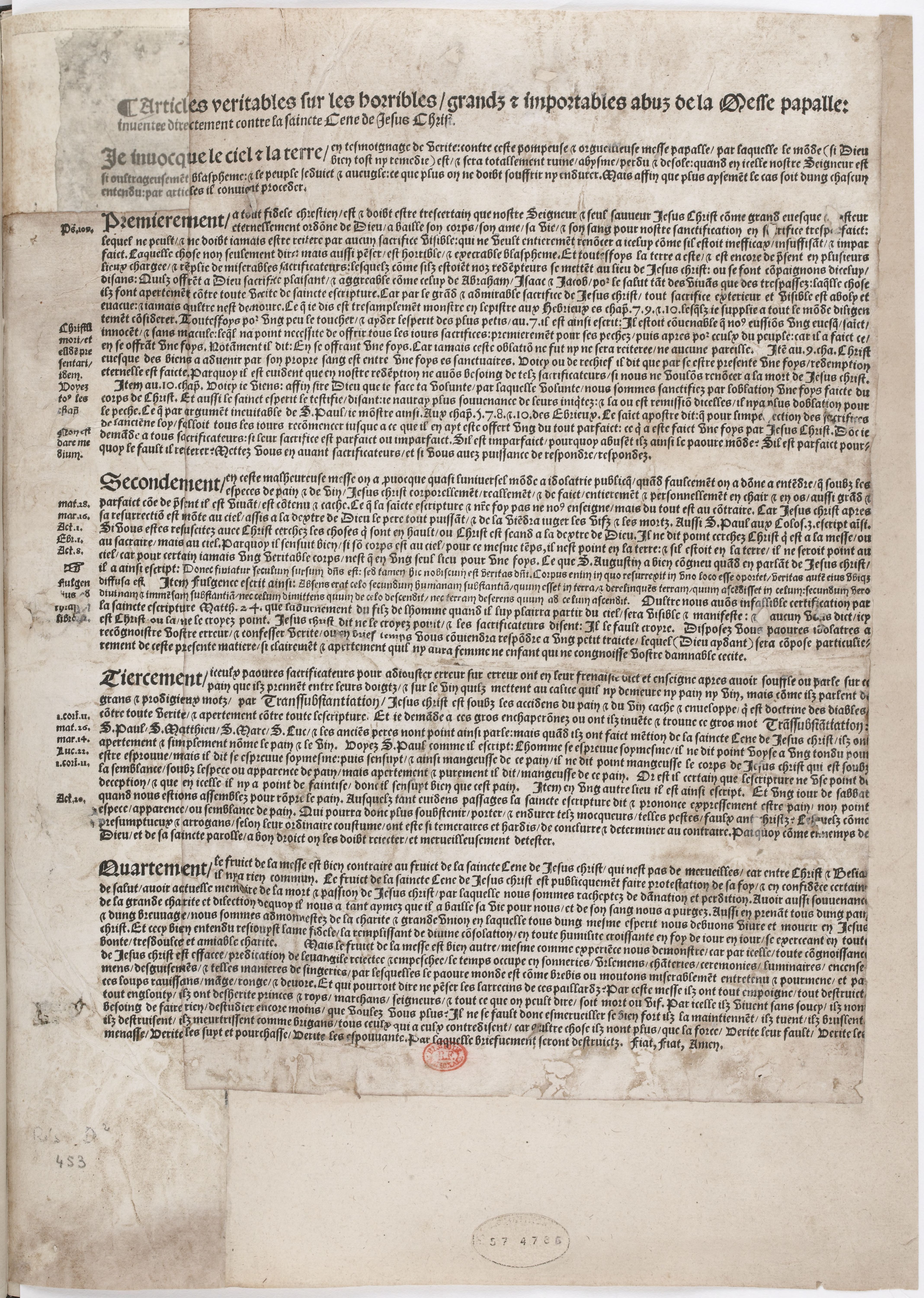
1539: the still unfinished chateau of Chambord is being shown by Francis I to Charles V.
1540s: the picture collection of Francis I being arranged at Fontainebleau.
1544: January: Marguerite of Navarre sends a letter of appreciation to her brother, king Francis I., who has sent her a crucifix, accompanied by a ballade, as a new year’s gift.
1547: death of Francis I.
1549: death of Marguerite de Navarre; death of Giampietrino.
1553: Jeanne d’Albret gives birth to Henry, the future French king Henry IV and first Bourbon king after the rule of the House of Valois.
1559: publication of the Heptaméron by Marguerite de Navarre.
1562-1598: French Wars of Religion.
1570: death of Francesco Melzi.
1589: Henry, grandson of Marguerite de Navarre and grand-grandson of Louise of Savoy, but by paternal descent a Bourbon, is becoming French king as Henry IV.
2015: an exhibition at the Château of Loches is dedicated to the 1539 meeting of king and emperor (see here).

»…in the evening at twenty-two o’clock we saw the Holy Sindon or Shroud«, Antonio de Beatis is writing in his travel account, his trip across Germany, France, the Netherlands and Northern Italy having enabled him to recall, as an eye witness, essential sights of the visual culture of Europe in 1517/18. These sights included, as said above, the Ghent Altarpiece, the Turin Shroud and also Leonardo da Vinci’s Last Supper at Santa Maria delle Grazie, Milan (picture of the Turin Shroud: Dianelos Georgoudis). Only the now so-called Turin Shroud, however, did apparently stimulate him to include a visual reproduction, a drawing, into the manuscript copies of his account.![]()
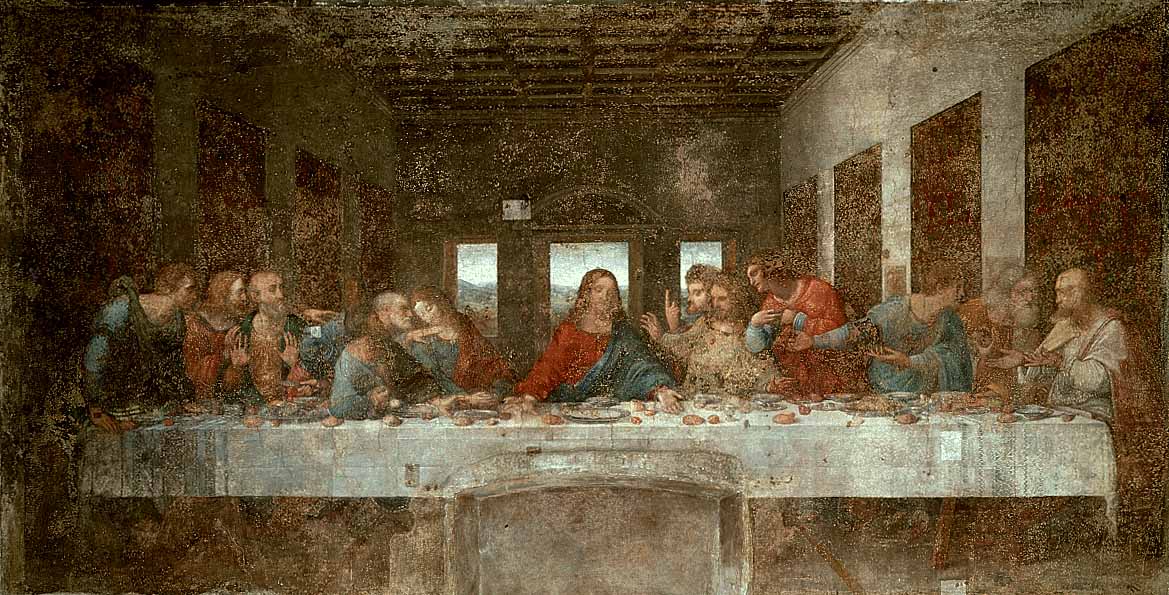
See also the episodes 1 to 24 of our New Salvator Mundi History:
Francis I and the Crown of Charlemagne
The Chronicles of Santa Maria delle Grazie
A Brief History of Digital Restoring
Learning to See in Spanish Milan
And:
MICROSTORY OF ART
ONLINE JOURNAL FOR ART, CONNOISSEURSHIP AND CULTURAL JOURNALISM
HOME
© DS